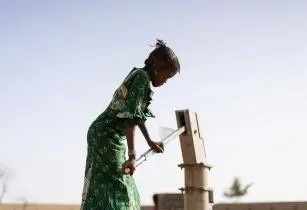With famine fast approaching in Somalia, there is still time to turn the tide by addressing the immediate needs of rural communities who are among those at greatest risk, the Food and Agriculture Organisation of the United Nations (FAO) said on 20 December in the context of the recently released food security survey findings
Five consecutive failed monsoons triggering a historic drought has been enough to put Somalia on the brink of famine in recent months resulting in skyrocketing food prices and further intensifying conflict.
The Integrated Food Security Phase (IPC) Acute Food Insecurity analysis specifically flags elevated mortality levels in some of the most exposed areas. According to the latest projection update, between January and March 2023, 1.9 mn people are expected to be in IPC Phase 4 (Emergency) conditions. This number is expected to gradually increase to 2.7 mn people between April and June. This means that an estimate of 727,000 people will likely face catastrophic food insecurity by June 2023.
“The situation in Somalia remains dire. Current levels of humanitarian assistance are helping to prevent extreme outcomes, but they are not sufficient to halt the threat of famine beyond a few months at a time,” said Etienne Peterschmitt, FAO representative in Somalia. “People are dying in IPC Phase 4. Yet, still there is an unrelenting focus on famine declarations as a trigger for action. Real action needs to be taken not only to help communities meet their immediate needs, but also so they can adapt their livelihoods and build resilience in the face of climate crises and economic shocks, preparing them for whatever the future may bring,” he added.
The extended and unprecedented drought conditions have left rural communities are most at risk, with pastoral, agropastoral and farming communities being unable to cope. Their survival depends on the survival of their herds and ability to grow crops, which have been severely hampered by the extended drought as well as their children’s nutrition. It is crucial to save livestock and keep them fed and healthy since they are the only source of food and income for many rural communities. Preliminary findings from an upcoming study in the Horn of Africa indicate that keeping livestock fed reduced the risk of acute malnutrition by up to 11% and of child stunting by up to 8% in pastoralist communities.
FAO will continue providing range cubes and vaccines for animals and restoring water holes, alongside cash assistance to help people meet their basic needs. Assisting rural livelihoods saves lives, helping people to remain in their homes when it is safe for them to do so and paving the way for future recovery. Currently, a lack of large-scale funding for livelihoods support, climate‑resilient food production and development priorities poses great challenges.
From May to December 2022, under the Famine Prevention Scale-up Plan, the FAO has reached more than 700,000 individuals across 35 districts with cash, more than 40,000 individuals with agricultural inputs such as seeds, animal feed and fertilisers, treated 11 mn animals to support their survival and trucked 27 mn litres of water to remote areas.
Moreover, alongside livelihoods assistance, more than US$24mn in cash, has been provided to rural communities who are most exposed to famine. The FAO has further plans to reach over a million more people in the coming months.








